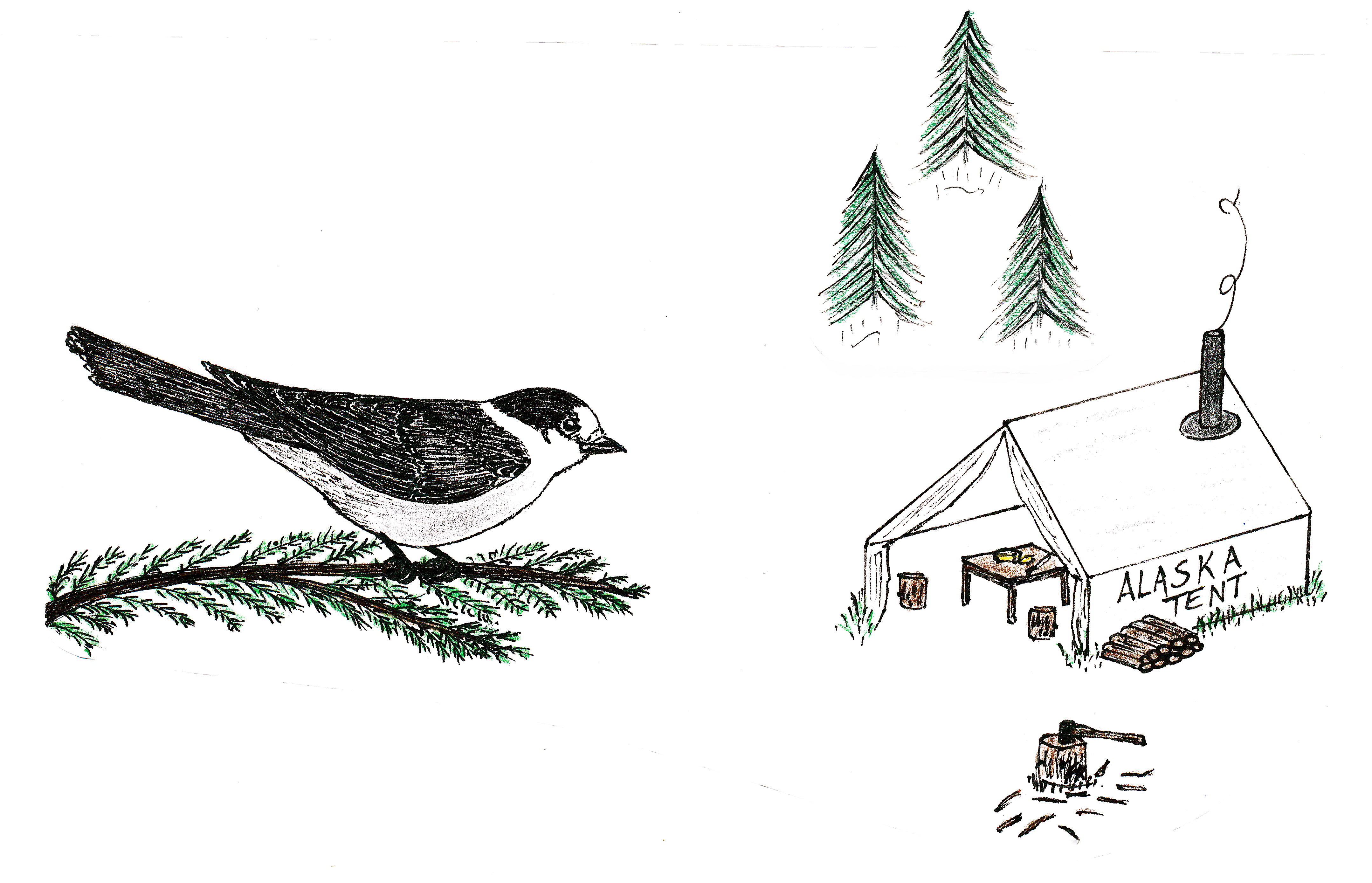Gray Jay (The Cinerous Crow) Kisirallerr
Chances are you’ve never heard of the “cinerous crow,” at least by that name. But I know you’ve seen it time after time at your fish sites, hunting camps, or even in your own backyard. It was called “whiska-zhon-shish” by the Cree Indians, and although the translation is “the little one that works at a fire,” the English simply called it, “whiskey jack.” Yes, you guessed it, the Canada jay.

“Cinerous” comes from the Latin word, “cinereus,” meaning “ashes,” and refers to the black and gray plumage of the jay. It’s scientific name is Perisoreus canadensis, which, loosely translated, means “the Canadian who stores food.” Thus, its common names, Canada jay and camp robber, since it often participates in unpremeditated (and, I’m sure, some premeditated) robberies of unguarded food scraps from campfires or even from inside tents in both Canada and Alaska.
Not many years ago, however, the bird was renamed by the American Ornithological Union, and is now officially referred to by the colorless moniker of Gray jay. I’ve heard it said by some Alaskans, and at least one Canadian, that the person who suggested this name should have been tarred and feathered. He or she certainly wasn’t familiar with the lore surrounding this fascinating bird which, as a member of the Corvid or crow family, has one of the largest brains per body size in the animal world.
I remember a story a Yupik friend once told me about how they never used to call a grizzly bear by its proper name when hunting it. Instead, they referred to it as “Kisirallerr,” which translates as “camp robber,” the name they also give to the Canada (whoops, I mean Gray) jay. This was so the bear’s ambulant spirit wouldn’t hear its own name being spoken and thus allow the bear to escape the hunters. I’ve also heard this jay referred to as Neqaiq, meaning “food- or fish-stealer;” qupanuar(aq), possibly referring to its habit of using its sticky saliva to store tidbits of food; and finally, nunaniryuk, or “happy bird;” and two others: keggapatayuk and tapaktayaq, both of which I have no idea as to the meaning.
Gray jays weigh less than three ounces (thus disqualifying them as a crow), and have long, soft and silky plumage, especially in winter, so they can keep warm in places where temperatures plummet to lower than sixty degrees below zero. They are provident birds, which means they store large quantities of food during the warmer months to use in winter. In fact, they cache food year round, using their gluey saliva to help stick pieces of food in bark crevices and other hiding places. They can even carry food with their feet, a trait that is rare among songbirds.
Like so many others of their Corvid cousins, Gray jays are monogamous and mated pairs stay together year round and defend permanent territories. You’ll see them even in winter usually accompanied by their most dominant young. The parents drive this young bird away in early spring, however, when the urge to nest takes over.
Since Gray jays are permanently bonded they don’t have much of a courting ritual, and about all you’ll see is some feeding of the female by the male. Not even any billing as with the Raven. Seems like a very pragmatic relationship. But as soon as you see the courtship feeding, you know the pair is building a nest somewhere on the branch of a dense spruce, close to the trunk. The nest is bulky and well woven of small sticks, bark, moss and grass, is fastened together with spider silk, and is well insulated with a lining of grass, fur and feather down.
Believe it or not, the female sometimes begins incubation when the breeding grounds are still snow-covered and the temperatures are as low as 30 degrees below zero! She lays 3-4 grayish white eggs that are finely dotted with brown, olive or reddish. Mom does the incubation by herself for 18-22 days, but dad provides the food for her on the nest.
After hatching, the mother bird broods the young most of the time at first while her mate brings the food to the nest. Later, when the young have a few more feathers on them and are less vulnerable to the cold, both parents will forage for food and bring it back to the nestlings. The young leave the nest when they are about 22-24 days old, and most of them remain with their parents, learning the survival tricks of the trade, for at least another month. Then they are theoretically on their own, although as I mentioned earlier, the most dominant of the offspring usually hangs around all winter with its parents.
Like their close cousin the Raven, Kisirallerat are said to be conscious of the world around them, and I guess that’s more than can be said about those who gave them the lackluster name, Gray jay.







